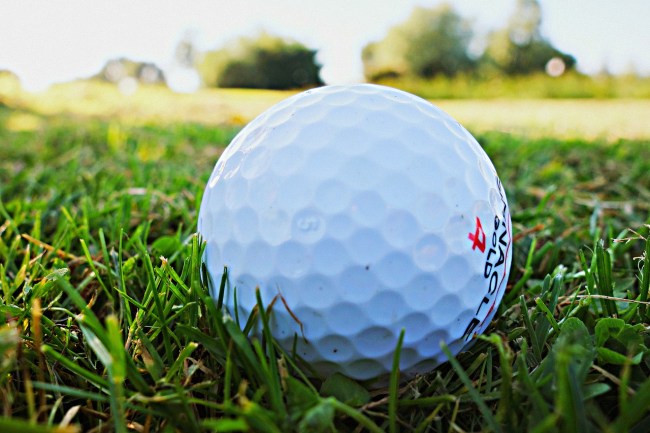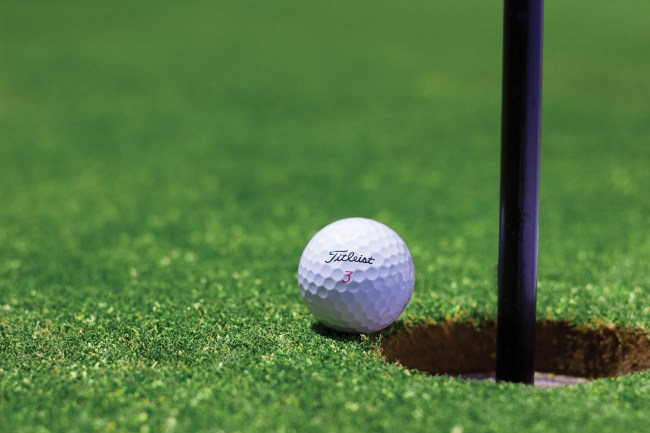
Pixabay
- The dimples on a golf ball have a huge impact, but why do they exist in the first place?
- Here’s a look at how they’ve evolved over the years and why they’re so important
- Read more about golf here
I think it’s safe to say the game of golf has evolved a bit since people started using sticks to whack balls around the lush meadows of Scotland a few hundred years ago— which in and of itself was an evolution of a game the Dutch started playing all the way back in the 1200s.
The most dramatic changes started to occur toward the tail end of the 19th century as people started to examine the physics behind the game and make adjustments to the tools used to play it.
However, I would argue nothing has had a bigger impact on the game than the evolution of the golf ball.
In their current form, the Rules of Golf state “the ball must not be substantially different from the traditional and customary form and make.”
It’s an interesting choice of words when you consider how much the definition of “traditional” has changed since people were playing with leather spheres.
I’ve played golf for years and have never cared much about the science behind the sport but I recently realized there’s one question I should really know the answer to: Why do golf balls have dimples?
It turns out they were a bigger game-changer than I ever would have imagined.
The Evolution of the Golf Ball

Pixabay
There’s a debate over whether or not the first golf balls were made of wood, but even if they were, they were phased out by the time people started playing what is widely considered the “modern” version of the game in Scotland.
Leather balls eventually became the norm and the Dutch introduced the Scottish to the featherie, which you’ll probably be shocked to know was a ball filled with feathers (although there were other variations that used hair from various animals).
One of the biggest advancements in the history of golf was introduced in the mid-1800s after Scottish clergyman Robert Paterson developed a ball made from tree sap (which Tiger Woods once used to play a round at St. Andrews).
The rubbery ball traveled farther than its predecessors but one of the downsides of Paterson’s creation was that it was easily dented. However, people soon realized the indentations actually helped improve the flight of the ball.
In 1898, a group of golfers filed a patent for what would be the world’s first purposefully dimpled golf ball and helped usher in a new era where players were able to put backspin on the ball and have better control on the greens.
The dimpled design would be tinkered with a bit over the next century on its way to becoming the “traditional and customary form” we know today as people slowly began to understand the physics behind the design, which brings us back to our initial question.
Why Do Golf Balls Have Dimples?

Pixabay
If you’re looking for a short answer, it basically boils down to a couple of things: distance and control.
However, if you’re interested in the exact science, the explanation is a bit more complex.
As mentioned above, the dimpled ball was really the first time players could have some say in the rotation of their shot (the introduction of grooves on the clubhead also had a major impact).
Without them, we wouldn’t live in a world where you can hit a shot from 170 yards out and have it come to a dead stop on the green when it lands (or at least attempt to).
However, the biggest impact dimples had on the game was probably the way they changed how far players could hit the ball, as they theoretically double how far a shot can travel.
All shots become the victim of drag at some point as the airflow creates a wake that is largely responsible for reducing a ball’s velocity. The dimples allow the air to flow more smoothly around the ball, which reduces that wake and allows it to carry longer than it would have otherwise.
The spin of the ball also creates a turbulent force that pushes air toward the bottom, creating lift and increasing the elevation of a ball in flight (which is similar to the physics airplanes rely on to optimize travel).
Companies still continue to toy with the exterior as they attempt to maximize a player’s ability to harness these forces. Today, the average golf ball has between 300 and 500 dimples (although most fall on the lower side of the spectrum) with a key focus on symmetry in order to ensure optimal flight.
If you’re looking for the perfect fit, some people suggest players with a higher handicap might want to gravitate to those with a higher dimple count as they tend to increase the total distance a ball can travel.
The difference might not mean much if you’re shooting in the 90s but a couple of strokes is still a couple of strokes.